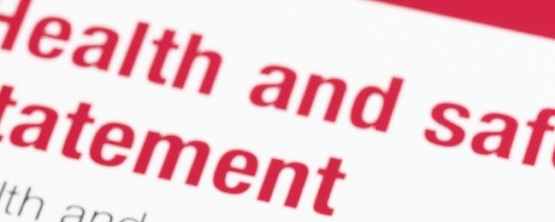Safety Procedures

Safety Procedures
Managers ask us - what to do to meet warranty obligations imposed on officers when it comes to environmental and safety laws? The answer is by and large, among other things: write down the procedures.
The problem is, that written and accustomed procedures may sometimes be a double-edged sword. Why? Mainly because familiar proceedings tend to have the effect of an "anesthetic" - you as managers are confident that after having written down the procedures everything is fine and this may become really damaging.
Content of procedures
Take for example the content of the procedures. The very existence of a solid procedure in the field of environment or safety is an essential condition for officers to meet their duty and responsibilities - but not a sufficient one. If the actual written procedures are not clear enough, and do not present an unambiguous definition as to what are the things that need to be done, how to do them, who should do them, when things should be done and how often, could well be that the final conclusion will be that in fact no actual procedures were truly effective. In this matter, the court ruled in the past - " Despite the volume of trade the company did not bother to implement clear procedures and assign responsibility on its people in charge of protecting the environment and preventing waste implications ...." and then elsewhere: "The company must determine that the procedure was clear, unambiguous, standard and "for real", when dealing and having under its responsibility this issue of such importance to the public .... " .
Compliance to procedures
Suppose you formulated and have written a clear procedure - even that is not enough. If the directors do not insist on the actual implementation of the existing procedures in the field of environment and safety, deviations and abnormal working procedures can be interpreted by their employees as something legitimate and become the standard. For example, the court ruled about an injured worker in the harbor... this is a true story that goes like this:
A worker employed through a contractor working in the harbor, was injured during unloading of a container while violating safety regulations at work, namely remaining on a section of the ship and tending to a container while the crane was working and unloading another container in that section.
The employee did not deny that he violated the written theoretic safety procedures, but claimed he did so only under the directives of the signalman, because he considered the signalman to be his direct manager at work, and therefore felt obliged to follow his orders.
The Court, which concluded that the harbor workers would deviate and disregard the administrative procedures on a regular basis and routinely, said that " it is difficult and unreal to expect subordinated workers " to refuse to obey the instructions of their superiors, and therefore attributed ultimately to the port 80% of the responsibility for the damage caused to the plaintiff, and only 20% to the contracting company that employed the worker and did nothing to avoid activities that endangered the employees. The employee himself carried only a small percentage of contributory negligence in this case.
In other words, without effective supervision, documented compliance procedures cannot by their mere existence really ensure their being maintained well and carried out properly - so it is clear that there is a significant legal exposure of directors to environmental and safety events.
Environmental Health and Safety
The term was coined and used worldwide - EHS - Environmental Health and Safety - to the overall goal of protecting at the same time the public , the environment and also the employees themselves and enable them to comply with applicable laws and thus protect the Company’s reputation. Most companies, large or small, are already well acquainted with it. EHS is a concept that comes from understanding that since things are interlinked with each other, it is not possible to sever the issues of environment, health and safety from each other and the correct way to deal with them is to handle these issues jointly.
The Levinson - Dror Law Office is already widely engaged in the preparation, inspection and improvement of safety procedures from an integrative perspective (environmental and safety) , always from the perception that these procedures should ultimately also stand the test of the courts of law.